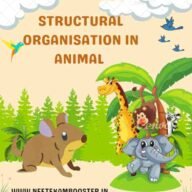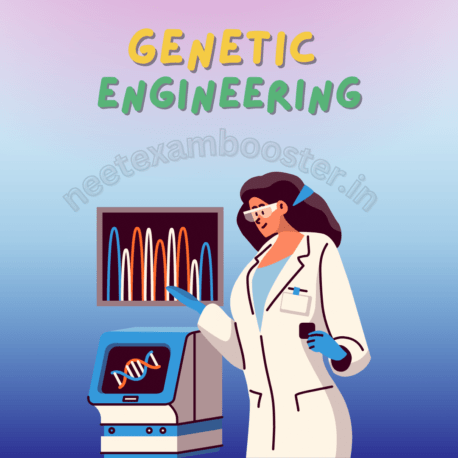Biomolecules Class 11
Biomolecules Class 11:- There is diversity in the living body,they share similarities in the chemical composition and metabolic reactions within the body. organism. When we look quantitatively, the elemental composition of non-living and living organisms appear to be similarities. Some organic compounds found in living organisms’ bodies are monosaccharides, amino acids, fatty acids, glycerol, sugars, nucleosides, nucleotides, etc. Here we are going to read about the given biomolecules.

Biomolecules Class 11 – Very Short Answer Type Questions
Q.1. Categorize the given one based on whether they were initially received as a natural product or as a synthetic chemical.
a) Penicillin b) Sulfonamide c) Vitamin C d) Growth hormone
A.1. Listed below is the classification
| Natural product | Synthetic Chemical |
| Penicillin | Sulfonamide |
| Vitamin C | – |
| Growth hormone | – |
Q.2. Categorize following into one of the appropriate bonds – ester bond, peptide bond, glycosidic bond, hydrogen bond.
a) Polysaccharide b) Fat c) Proteind) Water
A.2. a) Polysaccharide – glycosidic bond
b)Fat – ester bond
c) Protein-peptide bond
d) Water – hydrogen bond
Q.3. Write the name of any one sugar, amino acid, fatty acid, nucleotide.
A.3. Following are the name of: Sugar – Lactose
Amino acid – Leucine
Fatty acid – Palmitic acid
Nucleotide – Adenosine
Q.4. Co-factors different from prosthetic groups, how are they?
A.4.Cofactors can be organic or inorganic (metal ions) whereas the Prosthetic groups are organic compounds .Prosthetics are different from cofactors as they are very tightly bound to the apoenzyme.
Q.5. In the following options.Chitin, Cellulose, Glycogen, Polysaccharides and Starch are present in .Choose and write appropriately against each.
a) Exoskeleton of Cockroach b)Cotton fibre c) Peeled Potato d) Liver
A.5. a) The exoskeleton of Cockroach – Chitin
b) Cotton fibre – Cellulose
c) Liver -glycogen
d) Peeled Potato – Starch
Q.6. With regards to one substituent on the a-carbon Alanine and Glycine are different . Write other common substituent groups.
A.6. Following are the common substituent groups– H and NH2COOH.
Biomolecules Class 11 Quiz
Q.7. What do you meant byBiomolecules?
A.7.Biomolecules is the very essential organic molecules, primarily involved in the maintenance and metabolic processes or activities of living organisms.
Q.8.The most abundant element found in living organisms is….
A.8.Water is the most abundant element found in living organisms .
Q.9.Write the types of biomolecules.
A.9.There are four major types of Biomolecules – Carbohydrates, Proteins, Nucleic acids and Lipids.
Biomolecules Class 11 – Short Answer Type Questions
Q.1. Rubber can be classified as a primary metabolite or a secondary metabolite? Give a short note on the rubber.
A.1. Rubber is a secondary metabolite and it is extracted from the rubber tree. The latex in the rubber tree is produced by highly specialized cells in phloem known as laticifers.It is a terpenoid and due of its high tensile strength, plasticity, and elasticity, it is used across in the field o industries. Rubber is a polymeric substance and is a good conductor of electricity.
Q.2. Illustrate with the help of an example why nucleic acids display secondary structure?
A.2.Secondary structure of a nucleic acid molecule is in circumstances of base-pairing interactions in a single molecule or a group of interacting molecules. The RNA and DNA secondary structure vary. It’s example is DNA consists of two complementary strands of polydeoxyribonucleotide, which is coiled spirally on a common axis forming a helix. Due to the phosphodiester bonds, ionic interactions, and hydrogen bonds this double-stranded helical structure of DNA is supported.
Q.3. Write a comment on it.The living state is a non-equilibrium steady-state to be able to perform work .
A.3. Living body of organisms exist in a steady state which is characterized by the concentration of every biomolecule, that is in metabolic flux. All the physical or chemical phenomena move parallelly to the equilibrium. Living body of organisms works continuously therefore they cannot reach equilibrium. So that living state is in a non-equilibrium steady-state to be able to perform work that is attained via energy provided by metabolism.
Q.4. Write about the sources of Proteins.
A.4. The main sources of protein are almonds, beans, broccoli, chicken, cottage cheese, eggs, fish, milk, oats, pulses, seafood, soy, quinoa and yoghurt.
Biomolecules Class 11 – Long Answer Type Questions
Q.1.The formation of the enzyme-substrate complex is the first step. Explain the other steps until the formation of the product in catalyzed reactions.
A.1. The cycle of enzyme action can be explained in following way:
- Firstly the active site of the enzyme gets binded with the substrate that fits into the active site.
- Than the binding causes the enzyme to change its shape, leading it to fit more tightly around the substrate
- In vicinity of the substrate, active site of the enzyme breaks the chemical bonds of the substrate results to the formation of the new enzyme-product complex.
Q.2. Describe through the Watson-Crick model, the secondary structure exhibited by the nucleic acids.
A.2. Nucleic acids exhibit a wide variety of secondary structures. Let’s take an example, the Watson-Crick model. This model explains that the DNA exists as a double helix structure, where the two strands of polynucleotides are in the opposite direction. DNAs backbone is formed by the sugar-phosphate-sugar chain where as the nitrogen bases are proposed perpendicular to that backbone, facing inwards. A and G of one strand base pairs with T and C respectively on the other strand.In between A and T there are two hydrogen bonds and between G and C, there are three hydrogen bonds where as each strand appears as a helical staircase. The one complete turn of the helical strand has ten base pairs
Biomolecules Class 11 toppers notes
Q.3. Distinguish between nucleotide and nucleoside. Write two examples of each with their structure.
A.3. Following are the differences between nucleotide and nucleoside:
| Nucleoside | Nucleotide |
| This compound is formed by the union of a nitrogenous base with a pentose sugar. It is slightly basic in nature.It is the components of the nucleotide and forms with deoxyribose and riboseExample – Uridine, Adenosine etc | This compound formed by the collection of a nitrogen base, phosphate, and a pentose sugar. This is acidic in nature and formed through phosphorylation of nucleosides.Example – GMP, CMP, AMP etc. |
Q.4.Write the main functions of carbohydrates.
A.4.The main function of carbohydrates are following:
- It regulates blood glucose.
- It prevents ketosis and Involved in fat metabolism .
- To the body and to the nervous system,Provide energy and food.
- It functions as the basic part of food including fibre, starch, and sugars.
- It is the primary source of energy. So it is involved in the breakdown of starch into glucose, and proteins to produce energy for metabolism.
Click here to join our telegram channel for more study materials like this (Biomolecules Class 11)



















